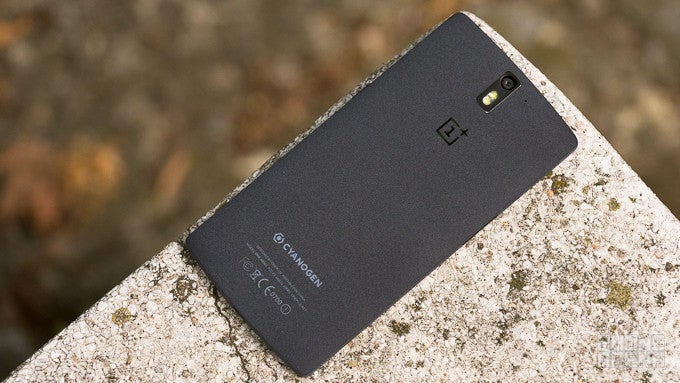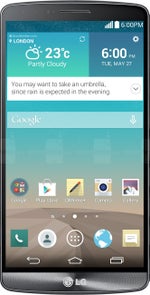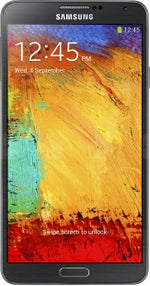OnePlus One Review

Update: Read our OnePlus 2 review!
Introduction
Back in April, when smartphone entrant OnePlus finally took the wraps off of its first phone after months of teasers and hype build-up, we were part of the cheering crowd. After all, what's not to like? We were promised an affordable flagship phone with no-compromise specs, and these promises certainly materialized. The 16GB version of the OnePlus One is currently sold for $299, and it packs some pretty amazing hardware. It's got a large, 5.5-inch display, along with latest generation silicon in the Snapdragon 801. It's also a very capable camera phone, and its large battery ensures industry-leading longevity.
But we were also a little hesitant during the whole hype campaign around the One. Indeed, we knew that the more OnePlus drove expectations up before launch, the bigger the chance that disappointment was inevitable.
As it turns out, we were right on the money. That's not to say that the OnePlus One isn't a great device – it is, especially considering its affordable price tag – but it's quite obvious to us that the company failed to deliver in the public's eye and in practice. This is to signify the continued issues OnePlus seems to have in terms of availability, and that has left many disappointed. Indeed, currently the OnePlus One can only be bought if you happen to win an invitation from the company to buy one, and that's very far from a sure thing. This being such an appealing device makes this lack of supply all the more terrible to stomach.
How appealing exactly, however? Let's take a closer look and find out.
In the box:
- 2.1A wall charger
- USB cable
- SIM ejector tool with keychain
Design
The Sandstone Black version comes with a unique and extremely grippy back shell that characterizes the OnePlus One more than anything else.
Despite OnePlus' vehement denials that Oppo is anything more than a small investor with it, it's quite obvious that the link between the two goes deeper still. Indeed, this is made obvious by the near identical looks of the One and the Find 7.
Looking at the OnePlus One head on, we're met with a slightly-rounded rectangular piece that is differentiated from the above-mentioned device through its display, which is protruding from its bed. With the exception of an LED notification light and a front-facing camera located at the top left, and the presence of capacitive navigation buttons, little else of note is to be found up front.
Turning the device around, we're met with, in our case, a “Sandstone Black” rear shell, which is extremely grippy and quite unique, too. We've never seen anything like this with another phone, and it definitely lives up to its name – it really reminds of sandstone. In fact, after our initial surprise (this thing feels strange to the touch), we quickly got used to the finish and found that we love the choice of materials here. This one honestly feels unique, but we're definitely worried about the practicality of it – for example, we already somehow managed to chip away at the finish, and the damage is visible. This is despite taking absolutely excellent care of the phone.
Moving on, at the sides, we have the power key comfortably placed within a thumb's distance on the right side, and a volume rocker on the left. Both of these are very well made and protrude just enough to provide proper feedback, but also remain inconspicuous. Travel is also excellent.
In terms of overall looks, we're a little conflicted – the nice touch with the rear definitely distinguishes the One in the eyes of beholders, but, at the same time – it's not like the lines of the device are at all unique. Lastly, with dimensions of 6.02 x 2.99 x 0.35 inches (152.9 x 75.9 x 8.9 mm) and body weight of 5.71 oz (162 g), the One isn't exactly one hand-friendly.
Display
Color-accurate and usable outdoors. Good stuff.
In the era of big-screened devices, the 5.5-inch IPS panel with resolution of 1080 x 1920 pixels on the OnePlus One is starting to feel standard. Regardless of the relatively large display, the pixel density, at 401 ppi, ensures a detailed image at all times.
In terms of image quality, the IPS unit proves true-to-life, though it's not perfect. For example, color temperature, at 7066 K, is good, but not excellent (6500 K is the reference state). This means that the display is slightly colder than it should be, but still better than many rival solutions. Color reproduction is also very good, with fairly minimal deviations. For example, color intensities (saturation) are correct on the whole, but some, like magenta, have slightly wrong hues for each intensity level. Before we move on, it should be noted that the OnePlus One's CyanogenMod OS allows you to mess around with color reproduction, and, beyond the Standard and Vivid modes that come by default, you can also create a custom preset more to your liking (e.g., higher saturation for AMOLED-like colors).
Lastly, in terms of brightness, the One peaks at 447 nits, which we consider good, but not excellent. Like the Oppo Find 7a, the One also isn't the best out there when it comes to the viewing experience outside, but you can rest assured that you'd still be able to operate the screen, even under direct sunlight.
Interface and functionality
If you ever felt like stock Android is great, but could do with some extra functionality, then look no further than the OnePlus One's CyanogenMod OS.
Alongside the One's affordable price tag and interesting pick of materials for its body, the CyanogenMod 11S OS based off Android 4.4.2 KitKat driving the OnePlus One is among its defining points.
There's a lot to talk about here, but those of you who have utilized the custom ROM before will know what it brings to the table for the most part. The CyanogenMod version on the One has seen some noteworthy changes over the many ports available for a wealth of devices, but, at its core, we're talking about the same piece of code.
Looking at this holistically, the OS is a lot about emulating the stock Android feel without diminishing what makes it great – speed and ease of use. Instead, the CyanogenMod team has built on top of it, and in areas the team felt need changes. To that end, the software is basically like vanilla Android with a defining layer of customizations perched on top – the UI is skinned to an extent (essential apps only have a new icon, they're identical with stock Android on the inside), and you get a host of new features that you simply can't get with Google's original version.
For example, the built-in Trebuchet launcher allows for quite some visual customizations – you can choose between many homescreen transition effects, assign specific actions to buttons when on the lockscreen (i.e. long-press the home key starts the music player), and customize the quick toggles in the notification pull-down menu. There are also a few available status bar customizations, like the ability to show battery percentage (why is this still not core Android functionality?) and to switch the icon. While still on the topic of looks, the included Themes Showcase app allows you to browse hundreds of themes (paid or free) that can be downloaded and applied to the OnePlus One with a few clicks.
The CyanogenMod team is also fairly big on security, so the OnePlus One has advanced features in this area. For example, control over which apps can access personal data, like your contacts list, is easy and straightforward with Privacy Guard, and you can even enable the so-called WhisperPush service, which encrypts text messages. Lastly, blacklisting phone numbers from calling you or sending you text messages is baseline with the software.
On the whole, we quite like what we're treated to here – the extra layer of functionality is minimal, but somewhat liberating, and does not come at the expense of speed. That's right, app load times and navigation are both top notch.
Processor and memory
This is what we call true no-compromise performance.
In terms of processing might, the OnePlus One is right up there, with the best there is currently. Its powerful, quad-core Qualcomm Snapdragon 801 (MSM8974-AC) chip makes use of four 2.5GHz Krait cores and an Adreno 330 GPU, both of which deliver outstanding performance. Also helpful in that regard is the 3GB RAM module on board, which makes the OnePlus One kind of future-proof.
As can be expected from such a configuration, the One runs whatever you throw at it with ease and finesse. Even the most graphically-complicated 3D games do not strain the processor, and we're yet to see it allow stutters. This, as we pointed out in the previous section, extends to general UI navigation, which is done without a hitch. The OnePlus One really is a no-compromise device in this regard.
As for memory, there are currently two versions available, both with 3GB of RAM on board: a Silk White model with 16GB of internal storage, and the Sandstone Black edition we have on hand, with 64GB of storage. And no, there's no microSD card slot to be found anywhere.
Internet and connectivity
No complaints here.
Like most mainstream devices nowadays, the OnePlus One comes with Google's Chrome browser pre-loaded. That's a good thing, seeing as Chrome has become something of a reliable benchmark as far as browsing on your mobile goes.
Again, as can be expected from such a hardware configuration, page load times, rendering and navigation are all fluid, and leave nothing to desire at this point.
As for connectivity, the phone comes with FDD LTE coverage for bands 1, 3, 4, 7, and 17. When LTE isn't available, the phone reverts back to the now older, 3G HSPA+ standard, meaning speeds of up to 42.1 Mbps. Looking at the rest, we've also got support for NFC, MHL, DLNA, A-GPS, 5GHz Wi-Fi, Bluetooth 4.1, and USB 2.0.
Camera
Not the very best, but definitely up there. The UI is clean-looking, and, with some exceptions, easy to navigate.
The OnePlus One is equipped with a 13-megapixel, 1/3.06'' Sony Exmor IMX214 sensor paired up with a dual LED flash. The unit has a wider-than-average, f/2.0 aperture, and a 6 lens setup that is said to eliminate color aberration and distortion at the edges. Up at the front, you get a 5-megapixel shooter that is actually pretty good.
But let's first talk about the camera software, as this is still untested area. On the whole, the CyanogenMod team has once again managed to strike balance between simplicity and extra features, in much the same way they have with the rest of the One's interface. To that end, the UI is lightweight-looking with minimal clutter. That said, once you open up the settings menu, you're introduced to a plethora of options, but these are well organized and easy to navigate through. Some examples include controls for ISO, exposure mode and slow shutter speeds. In terms of video, you can also switch to a different video or audio codec. Lastly, there's even an option that switches the UI around so that left-handed folk can navigate it easier.
Our only two complaints with the UI are that, firstly, the viewfinder shows a 16:9 preview, while the camera churns out snaps in a 4:3 aspect ratio. This makes it impossible to know exactly how much of what you see is going to end up in the processed image. And secondly, flipping through shooting modes is done with a vertical swipe up and down, and that can make it kind of hard to quickly get to a shooting mode that happens to be the farthest from your current one. This is made worse by the fact that effects, such as Sepia, Mono, and Posterize, are also on that list, taking up slots. Thankfully, you can remove those, and cut the list down to the essentials, and access the wealth of extra shooting modes (night portrait, snow, candelight, backlight, etc.) and effects (neon, emboss, negative) through the circular icon on the menu.
Turning to image quality, we've gotta say that the OnePlus One delivers on the whole. Perhaps most importantly, we came across no significant deviations in terms of color reproduction. That said, occasionally we got underexposed snaps that are too dark. As for HDR snaps, these are pretty good on the whole, though highlights occasionally get some visual artifacts added to them. Generally, images have a fine look to them, detail is good, and noise, while present, is kept at acceptable levels.
When indoors, the OnePlus One also does a decent job. Colors are, again, fairly accurate, though it should be noted that snaps are on the warmer side (and a few exhibit a slight pinkish hue). As for environments in complete darkness, the OnePlus One's dual LED flash configuration proved capable enough to illuminate just enough of the scene, allowing the camera to snap a fairly realistic snap. That said, don't let the addition of an extra LED flash fool you – we've seen more powerful implementations out there, and without an extra lamp.
As for video capture, the One is solid. You get the now usual flagship feature set, including UHD and 4K DCI video capture at 30 frames per second (FPS), 1080p FHD capture at 30 FPS, and even slow-mo's that are shot at 120 FPS and 720p resolution. Thankfully, all of the above modes produce high quality footage.
Multimedia
The OnePlus One offers a well-rounded multimedia package.
The built-in Gallery is the only essential app that OnePlus and the CyanogenMode team felt needs direct intervention, and, to that end, the app here is skinned, and is more modern-looking. For whatever reason, the Gallery takes a about 2 seconds to open an image (thankfully, moving from one to the other is quick enough), and we never found a way to check out the expanded details of a certain photo (e.g. Resolution or EXIF data) through it, which is just odd. The video player, like with the stock Android Gallery app, is not stand-alone, and is instead only available through the One's Gallery. Again, oddly enough, video files won't show their name. That said, all the popular video encodings run smoothly at 1080p resolution.
As for music playback, the One again relies on a stock Google solution – Play Music. The phone's secret weapon is the AudioFX app that comes with a bunch of ready-made equalizer presets, and also allows you to add reverberation effects. The loudspeaker is potent enough to fill a small- to medium-sized room with above-average quality sound.
Call quality
The OnePlus One comes equipped with three microphones that work in tandem, allowing the device to isolate even loud background noise with a high degree of success. Voice is transmitted clearly, and the other side is well aware that it's you, since tonal information isn't lost on the way. Lastly, volume strength is excellent. Definitely above average on this end of the line.
As for the earpiece, things aren't as good. To start off, in order to make the best out of it, you need to keep the earpiece centered on your ear, otherwise you'll muffle it. Truth is, most of the time you will, and that means that volume output won't be very high, though it's definitely not worse than the average out there.
Battery
Believe it or not, we actually kept checking up with the OnePlus One during its battery test, as it became clear in the first few hours that we have a challenger here. The phone's score of 8 hours and 5 minutes proved that notion, and actually placed it just below the Sony Xperia Z2, which is the current flagship record holder, with 8 hours and 10 minutes. While this lets the Z2 keep the first spot, it's undeniable that the OnePlus One is just as good at staying online for extended periods of time – something we can confirm from having used the phone for a while now. Unfortunately for some, the 3100 mAh cell is embedded, so you can't remove it easily.
On another, related note, the OnePlus One comes with a wall charger that outputs the healthy 2.1 A of charge. This allows for very quick charge times, or, put in numbers -- 120 minutes from zero to full. That's on par with the LG G3 and Samsung Galaxy S5, but much better when compared with the Sony Xperia Z2 and HTC One M8.
Conclusion
In a world where the big league game is increasingly about rehashing designs in order to aid recognizability, the OnePlus One strikes us as a welcome distraction from the status quo. This is a fresh alternative, and mostly on account of the used materials with the back shell and the minty-fresh operating system.
But it's not all about the exterior – the beastly hardware, along with the software on the inside, make the One what it is just as much. The lightweight CyanogenMod OS runs very fluidly, and, with some exceptions, proves to be a polished piece of software that can successfully compete with major manufacturers' custom skins. In fact, it probably has a hand-up over them, at least in the eyes of users who prefer Google's light approach towards Android. As for the hardware, it really does provide no-compromise performance, both on and off stage – the One offers excellent display, camera, and call quality, along with outstanding battery life. Add that low starting price of just $299, and you've got yourself one killer device, if you can get it.
Indeed, as we said in the beginning of this review, the OnePlus One is currently sold via an invitation-only system, which means that your chances of being granted the option to buy one are on the very low side. That said, OnePlus has been giving indications that it's planning on scaling up production in the coming months (July/August and beyond), though, at this point, we wouldn't consider this a done deal. Said otherwise, while the OnePlus One currently offers an incredible bang for your buck, it remains to be seen if that will continue to be the case going forward.
Software version of the reviewed unit:
Android Version: 4.4.2
CyanogenMod version: 11.0-XNPH25R
Kernel version: 3.4.0-cyanogenmod-geb9c0a5
Build number: KVT49L

Follow us on Google News
































Things that are NOT allowed:
To help keep our community safe and free from spam, we apply temporary limits to newly created accounts: